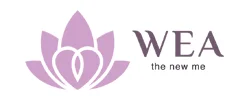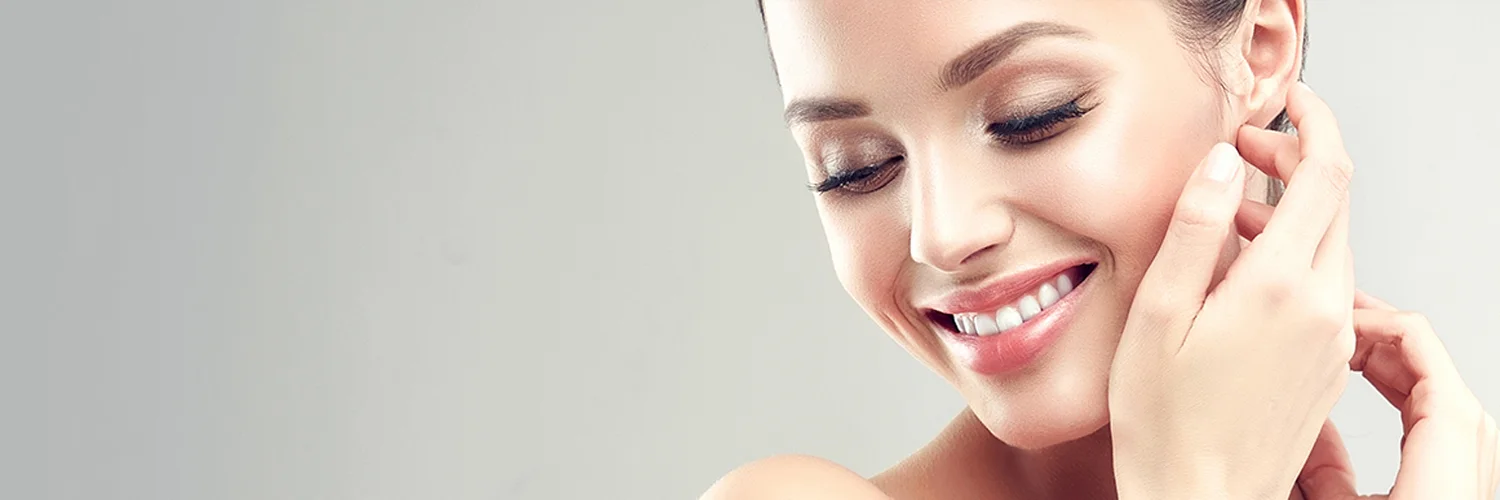Facelift | Nose Surgery | Ear Surgery | Eyelid Surgery | Eyebrow Surgery | Eyebag Removal | Necklift | Liplift | Chin Surgery
Laser skin resurfacing is a non-invasive, energy equipment based technique that reduces wrinkles and scars, evens out skin coloring, tightens skin and removes lesions. Lasers are beams of light that vaporize the outer layers of your skin and promote the growth of new collagen fibers.

The laser technique directs short, concentrated pulsating beams of light at irregular skin. Laser skin resurfacing removes skin very precisely, layer-by-layer by vaporizing it. Lasers remove the outer layer of your skin – the epidermis – and heats the underlying layer, called the dermis. The lasers stimulate the growth of new collagen fibers resulting in new skin that is smoother and firmer. This popular procedure is known by several other names, including lasabrasion, laser peel or laser vaporization.
Laser resurfacing can be used to treat: Fine wrinkles Age spots Uneven skin tone or texture Sun-damaged skin Mild to moderate acne scars
Laser resurfacing can be used to treat: Fine wrinkles Age spots Uneven skin tone or texture Sun-damaged skin Mild to moderate acne scars
You may be an ideal candidate for laser skin resurfacing if you have:
You may not be a good candidate for laser skin resurfacing if you have:
- Scars from acne or chickenpox.
- Uneven skin pigmentation.
- Skin scars or birthmarks.
- Age spots, liver spots.
- Sun-damaged skin.
- Non-responsive skin after a facelift.
- Fine lines or wrinkles around or under the eyes, forehead or mouth
- Enlarged oil glands on your nose.
You may not be a good candidate for laser skin resurfacing if you have:
- Active acne.
- Very dark skin.
- Deep wrinkles.
- Excessive or sagging skin.
Laser resurfacing is done with:
Ablative laser: This type of laser removes the thin outer layer of skin (epidermis) and heats the underlying skin (dermis), which stimulates the growth of collagen – a protein that improves skin firmness and texture. These lasers create a uniform injury to your skin in the treatment area. As the epidermis heals and regrows, the treated area appears smoother and tighter. Types of ablative therapy include a carbon dioxide (CO2) laser, an erbium laser and combination systems.The CO2 laser treatment uses laser light with a 10,600nm wavelength, which is in the mid-infrared region of the electromagnetic spectrum, and which is invisible to the human eye. Energy from the CO2 laser light is readily absorbed by water in the tissues, and since soft tissue is comprised primarily of water, CO2 laser energy can be used effectively for the eversion, incision, ablation, vaporization, and augmentation of soft tissues.
Non-ablative laser or light source: This approach also stimulates collagen growth. It’s a less aggressive approach than an ablative laser and has a shorter recovery time. But the results are less noticeable. Types include pulsed-dye laser, erbium (Er:YAG) and intense pulsed light (IPL) therapy.
Non-ablative laser or light source: This approach also stimulates collagen growth. It’s a less aggressive approach than an ablative laser and has a shorter recovery time. But the results are less noticeable. Types include pulsed-dye laser, erbium (Er:YAG) and intense pulsed light (IPL) therapy.
- You can treat any part of your body.
- Thanks to fractional lasers and healing accelerators, your body will recover quickly from the treatment.
- You can start exercising a few days after treatment as soon as the effects of the treatment have passed.
- We use an anaesthetic cream so the treatment is painless.
- No social downtime necessary. The effects of the treatment remain visible for 7 to 10 days in the form of redness and tiny scabs but the areas of the body prone to stretch marks can easily be covered by clothing.
- Avoid tanning or heavy sun exposure and use a broad-spectrum sunscreen daily for four weeks before treatment.
- Avoid deep facial peel procedures for four weeks before treatment (for example, strong chemical peels, laser resurfacing, dermabrasion).
- Don’t use medications that cause photosensitivity (such as doxycycline, minocycline) for at least 72 hours prior to treatment.
- If you have a history of herpes or shingles in the treatment area, let your doctor know and start your antiviral medication as directed (usually two days before treatment and continue for three days after treatment).
- To prepare your skin for laser resurfacing, you may be asked to apply a topical retinoid on your skin for about four weeks before your procedure.
- Areas of the face to be treated are numbed with a local anesthetic. General anesthesia may be used when the entire face is treated. A partial facelaserabrasion takes 30 to 45 minutes, and the full-face treatment takes 1-1/2 to 2 hours.
- Your face or area to be treated with be thoroughly cleaned.
- Immediately after treatment, your skin will be red and feel sensitive and sunburned. Redness, swelling, itching or stinging may last for a few days. Depending on the treatment, skin may even appear raw, ooze a yellow liquid and even blister. Don’t scratch or pick at skin that crusts as this can cause scarring or lead to an infection.
- Five to 7 days after laser resurfacing, your skin will become dry and peel. Your new skin will at first appear pink. It should begin to gradually lighten up over the next two to three months
- Cleanse the treatment area two to five times a day as instructed by your doctor.
- Sleep on an extra pillow at night to help reduce the swelling for the first four days after the procedure.
- Apply a cool compress or a wrapped ice pack for 15 minutes every one to two hours as needed, during the first 24 to 48 hours.
- Apply a thin layer of petroleum jelly (or any occlusive moisturizer) or antibiotic ointment (such as bacitracin) to the area twice a day until the skin heals.
- Avoid aggressive facial treatments, such as tretinoin or glycolic acid for four weeks and any topical products that may cause irritation for six weeks following treatment.
- Avoid activities that can cause flushing for two weeks after treatment.
Don’t smoke. Smoking slows the healing process.
Found on the stomach, back, or breasts, unsightly stretch marks on the skin can cause real distress for many people. These days, laser treatment is being used as one of the safest and most effective ways of eliminating stretch marks, especially those caused by pregnancy, adolescent growth spurts, or weight gain.
The laser works by selective photothermolysis. It emits a specific wavelength that acts directly on stretch marks without damaging the surrounding skin. The goal of laser treatment is to erase areas affected by stretch marks.
Stretch marks that are fresh and red in colour can be treated painlessly, quickly and effectively, sometimes in a single session using a pulsed dye laser. This laser essentially takes skin that has just broken and is beginning to scar and “glues it back together”. The treatment is most successful when stretch marks are still fresh and more easily treatable so it is best to seek treatment as early as possible.
For older, so-called white stretch marks, we employ different lasers over the course of several sessions targeting different skin layers. We fade out the stretch marks by making them blend into thesurrounding skin. The treatment works on all areas where stretch marks occur: stomach, thighs, calves, hips, back, buttocks, arms and breasts.
We treat white stretch marks using fractional laser devices that split the laser into thousands of microscopic beams before they penetrate the skin. This technology leaves tiny gaps of untreated skin in the treatment zone that facilitate rapid healing within only four to five days. This technique requires at least two sessions to be effective and is performed with the help of an anaesthetic cream.
The laser works by selective photothermolysis. It emits a specific wavelength that acts directly on stretch marks without damaging the surrounding skin. The goal of laser treatment is to erase areas affected by stretch marks.
Stretch marks that are fresh and red in colour can be treated painlessly, quickly and effectively, sometimes in a single session using a pulsed dye laser. This laser essentially takes skin that has just broken and is beginning to scar and “glues it back together”. The treatment is most successful when stretch marks are still fresh and more easily treatable so it is best to seek treatment as early as possible.
For older, so-called white stretch marks, we employ different lasers over the course of several sessions targeting different skin layers. We fade out the stretch marks by making them blend into thesurrounding skin. The treatment works on all areas where stretch marks occur: stomach, thighs, calves, hips, back, buttocks, arms and breasts.
We treat white stretch marks using fractional laser devices that split the laser into thousands of microscopic beams before they penetrate the skin. This technology leaves tiny gaps of untreated skin in the treatment zone that facilitate rapid healing within only four to five days. This technique requires at least two sessions to be effective and is performed with the help of an anaesthetic cream.
You should see an immediate difference in your treated skin. Depending on the laser treatment, your skin may stay pink or red for a few months. Your skin may continue to improve up to a year and the improvement may last for several years. Normal aging will eventually lead to new wrinkles, which can be treated with laser resurfacing again.
LASER TATTOO REMOVAL
Many people have tattoos they no longer want for various reasons. Perhaps your tattoo has aged badly or no longer fits with your personality or lifestyle. Our specialists at Wea regularly receive requests for tattoo removal. If you want a tattoo removed, we suggest laser treatment. Using this technique, we can remove an unwanted tattoo in only a few sessions without scarring or damaging your skin

How does laser tattoo removal work?
The results of laser tattoo removal technology are impressive. We use Q-Switch pulse laser technology to target and destroy the drops of ink lodged under your skin. We use lasers of different wavelengths to target and remove different colours.
During the session, the laser breaks up the ink drops that make up your tattoo. These ink particles are then absorbed and eliminated by your skin cells. By sweeping the skin with our lasers, we can remove tattoos gradually and selectively.
What are the advantages of laser tattoo removal?
This treatment for removing unwanted tattoos offers several advantages: This technique has existed for years and is always being improved upon. Tattoos can be completely removed in 95% of cases.It can be applied anywhere on the body. Unlike surgical interventions, laser tattoo removal can be used anywhere.
No scarring. Finally, with our fine lasers the treatment should not leave any scarring. In rare cases, minor changes in the feel and colour of the skin may occur but we have other treatments available at Wea to correct these.

